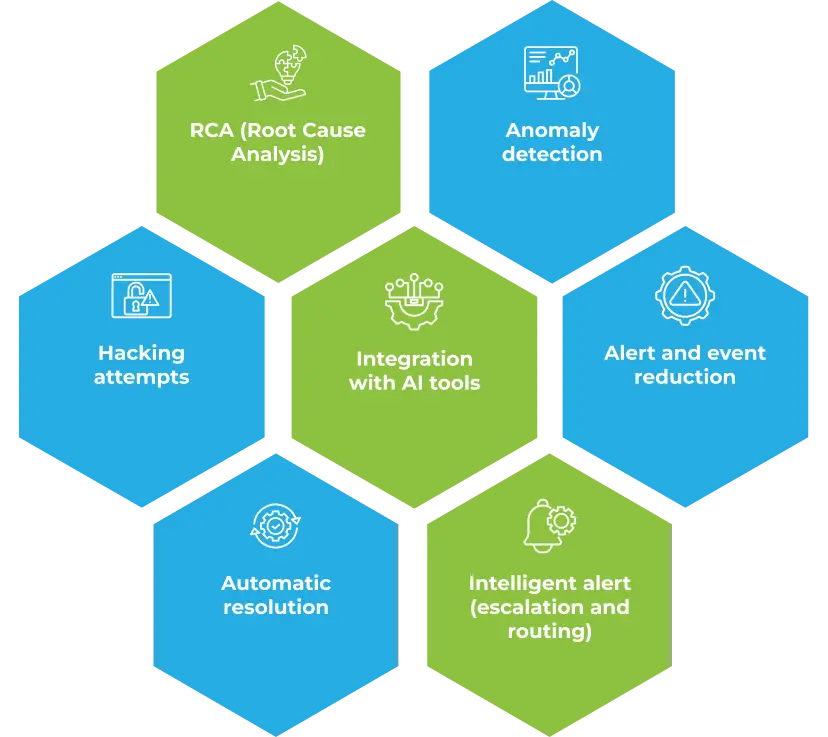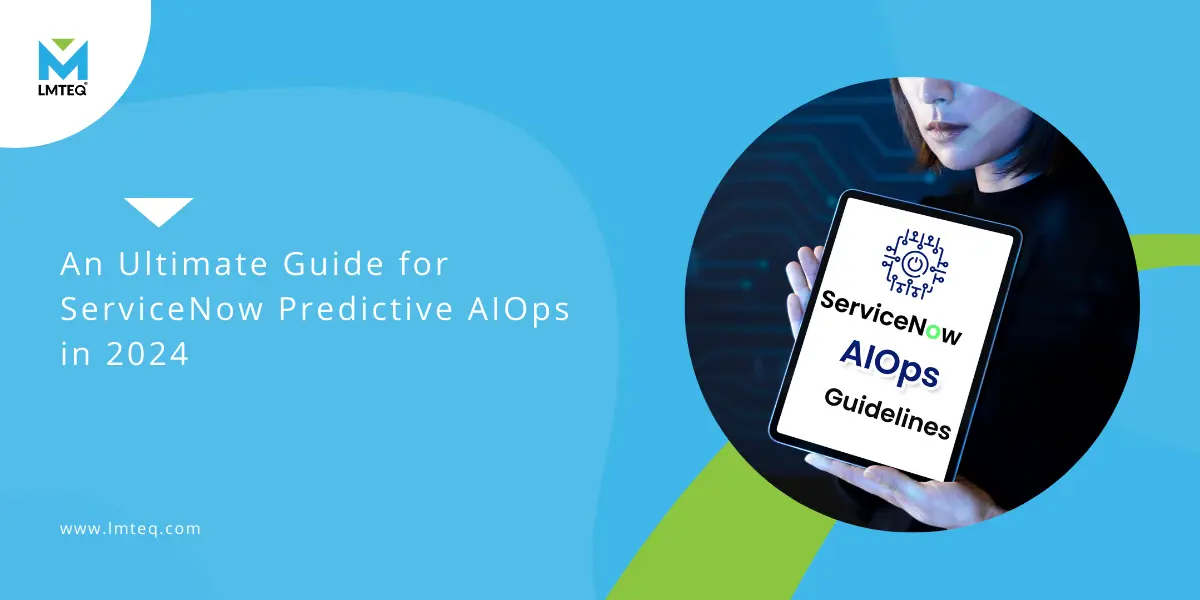Imagine a world where IT issues resolve “themselves” before you even know they exist—welcome to the power of ServiceNow AIOps
Yes, it’s important to proactively solve issues before they appear. However, it’s one thing to say it and another thing to actually do it.
And the best example is the “blue screen” system outage in almost all Windows machines. In summary, CrowdStrike pushed out an update to Falcon (which has high-level access to systems worldwide), and that caused a worldwide blackout that took days and weeks to resolve.
The service downtime persists as a huge challenge, which is being faced by companies worldwide regardless of the scale. One of the main reasons is that IT companies are reluctant to dispose of silos operations and use multiple tools to monitor their infrastructure and service health. This leads to higher service downtime.
Even though we cannot eliminate the service outage factor completely, we can significantly reduce the probability or the frequency of its happening with the help of ServiceNow AIOps.
In this article, let’s take a look at the ServiceNow AIOps and how it can enable organizations to embrace the proactiveness of identifying and resolving IT issues effectively.
What is ServiceNow Predictive AIOps?
*Here, automatic fix represents the automatic trigger of remediation workflow, known as “self-healing” to resolve the issue or notify the suitable personnel to take necessary action.
The Synergy Between ITOps and ServiceNow AIOps
Large organizations, typically Fortune 500 companies, deal with significant volumes of events and logs daily. Manual data management is becoming more susceptible to errors and confusion and consumes much time and resources.
This is where the ServiceNow AIOps significantly supports ITOps in analyzing large volumes of data with minimal effort. By leveraging historical data and Gen AI, ITOps can identify potential service issues and their impacts, and proactively empower the team to resolve them quickly. Additionally, it allows ITOps to automate tasks, reducing time and resources that can be redirected to more decision-making rather than issue resolution.
The synergy lies in how AIOps enhances the capabilities of ITOps, creating a more resilient, efficient, and proactive IT environment.
Why Choose ServiceNow AIOps?
Log Analysis and Anomaly Detection
ServiceNow AIOps is designed to detect outliers or anomalies using advanced machine learning algorithms. It identifies normal operating patterns in logs, traces, and metrics, including specific log sequences or correlations between log field values over time. It can also correlate logs across different sources, such as a load balancer and its connected web servers.
Once the machine learning algorithm identifies irregular patterns in normal operation behavior, it raises alerts corresponding to Configuration Items (CI) in the Configuration Management Database (CMDB).
This early detection allows the IT team to proactively address issues and prevent service disruptions, rather than reacting after they occur.
Additionally, there are intuitive dashboards and reports available to visualize and track log alerts and anomalies and take quick action before the impact.
Event Management
To enhance the effectiveness of existing monitoring tools like the building management system (BMS), ServiceNow AIOps integrates event management and tags to streamline the alert process. This transformation aims to simplify complex alerts and reduce the likelihood of service outages.
If you don’t have a Configuration Management Database (CMDB), you can still utilize event management through a “Tag-based Alert Clustering Technique” to link alerts based on tags. However, having a robust CMDB is recommended for efficient event management.
Additionally, combining event management with service mapping allows you to visualize the service impact of these alerts, providing interactive service maps for easier identification and prioritization of service issues.
ServiceNow’s AIOps for event management is a game-changer, drastically cutting down the time it takes to pinpoint and fix service outages and performance dips and improve the overall IT operations automation.
Metric Analysis
One of the reasons to choose ServiceNow AIOps is the ability to access raw metrics from various monitoring tools such as BMS and the ServiceNow Agent Client collector. These metrics can be used to generate events related to specific CIs in the CMDB when performance issues arise.
The analysis of metrics, logs, and anomaly detection are connected and driven by advanced machine learning algorithms, which help in identifying and preventing service outages.
How ServiceNow AIOps Works
Compared to other standalone predictive AIOps, ServiceNow AIOps works quite differently. Most of the standalone AIOps focus more on the trained machine learning algorithms, whereas ServiceNow AIOps focuses on finding the pattern on its own, meaning that there is no reason to tell the algorithm which type of situation to look for.
- Real-time ingestion of events, logs, and metrics,
- Incident prediction, (based on factors such as time, text, and topology)
- Correlate and find the root cause,
- Insights, actions, and remediation, (self-healing)
- Outcome.
Here, the first step in predictive AIOps is streaming events, and logging in real-time. As mentioned these raw and unstructured data from the integrated monitoring tools get fed into the ServiceNow ML algorithms to identify anomalies based on the existing learning patterns.
This “clustering” method varies depending on the situation and ServiceNow AIOps identify anomalies with three approaches:
- Tag-based alert clustering (suitable for a not-fully populated CMDB or absence of CMDB).
- Topology analysis (suitable to identify issues based on the topology from ServiceNow Discovery or Service maps).
- Automated Temporal analysis (suitable for continuous learning).
- AI-based Anomaly detection (suitable for finding issues in real-time using AI).
The Capabilities of ServiceNow AIOps

Total Time Taken to Fully Implement ServiceNow AIOps
- Phase #1 (Duration – 1 week) – This stage focuses on preparation. Required personnel and stakeholders discuss the service that the business requires.
- Phase #2 (Duration – 1 week) – This stage focuses on installing and configuring the ServiceNow AIOps based on the business needs. ServiceNow experts help you to understand each feature and what does it do.
- Phase #3 – (Duration – 2 weeks) – This stage focuses on training and optimizing the ML algorithms and as well the users.
- Phase #4 – (Duration – 1 week) – This stage is all about deploying the ServiceNow AIOps into the working environment and measuring its performance.
- Phase #5 – (Duration – based on the requirements) – This stage is purely based on the requirement, if you want to scale your other services, you can take a data-driven decision and automate that particular service(s).
Benefits of ServiceNow AIOps
- Resolve issues automatically at a faster pace,
- Low or no frequency of service outages,
- Lower cost and high productivity,
- Custom dashboards and reports,
- Simplified alerts, and
- Better CSAT.
Key Takeaway
At LMTEQ, our ServiceNow certified experts who have industry hands-on knowledge enable you to lower the service outage significantly by ServiceNow AIOps implementation services. Our service is fully customizable meaning our experts keenly collaborate with your team to understand the requirements and based on that we configure the ServiceNow AIOps to be as much as effective as possible.
Also, we help you to scale your business by automating several services and ensure that there is 99.9% of the service uptime.

